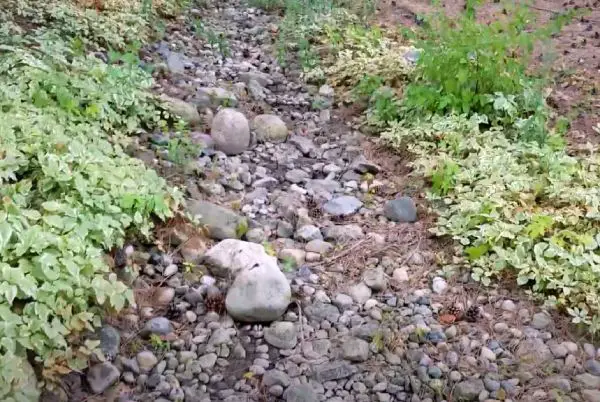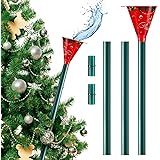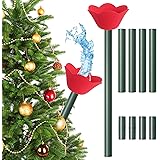Drainage issues are a common problem faced by homeowners and landscape designers alike. When faced with the decision to implement a dry creek bed or a French drain, it is essential to consider the pros and cons of each option.
In this article, we’ll explore these popular landscape drainage solutions in depth to help you make an informed decision based on your needs and preferences.
Dry Creek Bed: A Natural Solution
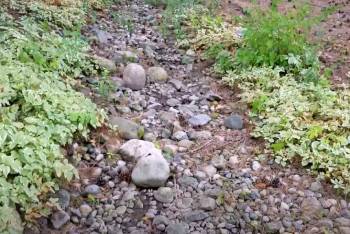
A dry creek bed is a landscape feature that mimics a natural watercourse, typically designed to manage stormwater runoff and control erosion. It consists of a shallow trench filled with rocks and stones of varying sizes, which help guide excess water away from your property while adding an aesthetic touch to your landscape.
Pros of a Dry Creek Bed
- Aesthetics
One of the most significant advantages of a dry creek bed is its visual appeal. It adds a natural and organic touch to your landscape, creating a sense of tranquility and beauty. Additionally, it can be designed to complement your existing landscape features, such as plants, boulders, and bridges.
- Environmentally Friendly
Dry creek beds are environmentally friendly since they help manage stormwater runoff, reducing the risk of erosion and sedimentation. This approach encourages the infiltration of water into the ground, replenishing the groundwater supply and preventing pollutants from entering nearby water bodies.
- Low Maintenance
Compared to other drainage solutions, dry creek beds require relatively low maintenance. Once installed, they can last for years with minimal upkeep, primarily involving periodic checks for sediment buildup and occasional adjustments to the rocks or stones.
Cons of a Dry Creek Bed
- Limited Drainage Capacity
A dry creek bed may not be the most efficient option for areas with severe drainage issues, as it is primarily designed to handle moderate water flow. In cases of heavy downpours, the creek bed may not provide adequate drainage and could overflow.
- Requires Space
Dry creek beds require sufficient space for installation, making them unsuitable for properties with limited landscaping areas. Additionally, the design process can be time-consuming, as it involves selecting appropriate materials and planning the layout to ensure a natural appearance.
French Drain: A Tried-and-True Solution
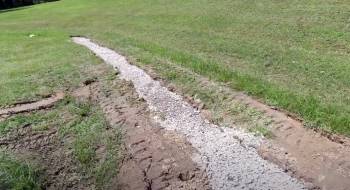
A French drain is a sub-surface drainage system that consists of a perforated pipe surrounded by gravel and installed in a trench. It is designed to collect and redirect excess groundwater and surface water away from your property, preventing waterlogging and foundation damage.
Pros of a French Drain
- Highly Effective
French drains are highly effective at managing water issues, as they collect and redirect excess water underground. They are ideal for situations where water accumulates near the foundation or in low-lying areas prone to flooding.
- Longevity
When installed correctly, French drains can last for decades with minimal maintenance. They are made from durable materials, such as PVC or corrugated plastic pipes, ensuring a long lifespan.
- Versatile
French drains can be customized to suit various property layouts and drainage requirements, making them a versatile drainage solution. They can be installed around foundations, beneath basements, and in yards or gardens to address specific drainage problems.
Cons of a French Drain
- Invasive Installation
Installing a French drain can be invasive and time-consuming, as it involves digging a trench and potentially disturbing existing landscape features. Additionally, it may require the removal of plants, trees, or other obstacles to create a clear path for the drain.
- Maintenance
While French drains are relatively low maintenance, they may occasionally require cleaning to remove debris and prevent clogs. This process can be labor-intensive and may involve professional assistance.
- Aesthetics
Unlike the visually appealing dry creek bed, French drains are hidden underground and do not contribute to your landscape’s aesthetics. They are a strictly functional drainage solution without the added visual appeal that a dry creek bed provides.
Additional Considerations
When choosing between a dry creek bed and a French drain, it is also essential to consider factors such as budget, local regulations, and the overall impact on your property’s value.
Budget
Both dry creek beds and French drains have varying costs associated with installation and maintenance. Dry creek beds may have a higher initial cost due to the materials used (rocks, stones, boulders) and the design process. However, they usually have lower maintenance costs over time.
French drains may have a lower initial cost but may require more maintenance in the long run, such as cleaning and potential repairs. Additionally, the invasive installation process may incur additional costs to repair any landscaping disturbances.
Local Regulations
Before installing either a dry creek bed or a French drain, it is crucial to check your local regulations and obtain any necessary permits. Some areas may have specific requirements or restrictions on the types of drainage systems that can be installed. It is essential to ensure that your chosen solution complies with these regulations to avoid potential fines or penalties.
Property Value Impact
The impact on your property’s value is another essential factor to consider when choosing between a dry creek bed and a French drain. A well-designed dry creek bed can enhance your property’s visual appeal, potentially increasing its value. On the other hand, a French drain may not contribute to the property’s aesthetics but can help protect the foundation from water damage, preserving the structural integrity and overall value of your home.
Expert Advice
Lastly, it is always a good idea to consult with a professional landscaper or drainage expert before making a decision. They can assess your property’s unique characteristics and drainage needs, providing tailored advice on the best solution for your specific situation. By leveraging their expertise, you can make a more informed decision and ensure that your chosen drainage solution meets your needs and preferences.
In conclusion, the decision between a dry creek bed and a French drain depends on various factors, including drainage requirements, aesthetics, budget, local regulations, property value impact, and expert advice. By carefully weighing the pros and cons of each option and considering the additional factors mentioned above, you can make the best decision for your property and ensure that your drainage solution is both functional and visually appealing.
Frequently Asked Questions (FAQs)
Is a dry creek bed better than a French drain?
The choice between a dry creek bed and a French drain depends on your specific drainage needs, landscape aesthetics, and available space. A dry creek bed is a more visually appealing and environmentally friendly option but may not be suitable for severe drainage issues. On the other hand, a French drain is highly effective at managing water issues but lacks the aesthetic value of a dry creek bed.
Are dry creek beds effective?
Dry creek beds are effective at managing moderate water flow and preventing erosion. They can help guide excess water away from your property while adding an aesthetic touch to your landscape. However, they may not be the best solution for properties with severe drainage issues, as they have limited drainage capacity.
Will a dry creek bed help with drainage?
Yes, a dry creek bed can help with drainage by directing stormwater runoff away from your property and reducing the risk of erosion. They are an excellent option for managing moderate water flow but may not provide adequate drainage during heavy downpours.
What is the best alternative to a French drain?
If a French drain is not suitable for your situation, other drainage solutions may be more appropriate, such as a dry creek bed, a swale, or a catch basin system. The best alternative will depend on your specific drainage requirements, available space, and landscape design preferences.
Why not use a French drain?
While French drains are highly effective at managing water issues, they have some downsides, including invasive installation, maintenance requirements, and lack of aesthetic value. If these factors are a concern, you may want to consider alternative drainage solutions like a dry creek bed, swale, or catch basin system.
What are the downsides of a French drain?
The downsides of a French drain include invasive installation, which can disturb existing landscape features; maintenance requirements, such as occasional cleaning to prevent clogs; and lack of aesthetic value, as they are hidden underground and do not contribute to your landscape’s visual appeal.
Conclusion
When deciding between a dry creek bed and a French drain, consider your specific drainage needs, landscape design preferences, and available space. A dry creek bed is an aesthetically pleasing, environmentally friendly, and low-maintenance option, ideal for moderate water flow management. In contrast, a French drain is a highly effective, versatile, and long-lasting drainage solution but requires invasive installation, periodic maintenance, and does not contribute to your landscape’s aesthetics.
Ultimately, the choice between a dry creek bed and a French drain will depend on your unique situation and personal preferences. By carefully evaluating the pros and cons of each option, you can confidently choose the best drainage solution for your property.
Auto Amazon Links: No products found.
Perfect Plants Christmas Tree Saver 8oz. | Easy Use Xmas Tree Preserver Food | Have Healthy Green Christmas Trees All Holiday Season
$9.97 (as of December 12, 2025 05:04 GMT +00:00 - More info- Product prices and availability are accurate as of the date/time indicated and are subject to change. Any price and availability information displayed on [relevant Amazon Site(s), as applicable] at the time of purchase will apply to the purchase of this product.
Rocky Mountain Goods Christmas Tree Food - 8 oz Tree Preservative - Reduce Needle Drop - Greener Scent - Fir, Pine, Spruce Trees - Extend Tree Life
$9.95 (as of December 12, 2025 05:04 GMT +00:00 - More info- Product prices and availability are accurate as of the date/time indicated and are subject to change. Any price and availability information displayed on [relevant Amazon Site(s), as applicable] at the time of purchase will apply to the purchase of this product.
VICAMB 39.3 Inch Christmas Tree Watering Funnel,Christmas Tree Watering System Device,Long Tree Watering Funnel Spout for Indoor Outdoor Xmas Tree
$16.99 (as of December 12, 2025 05:04 GMT +00:00 - More info- Product prices and availability are accurate as of the date/time indicated and are subject to change. Any price and availability information displayed on [relevant Amazon Site(s), as applicable] at the time of purchase will apply to the purchase of this product.
FirEver Pure Christmas Tree Food | Preserver Additive & Season Extender for Live Xmas Trees | Keep It Green, Reduce Needle-Drop | Miracle Freshness (8 oz)
$14.99 (as of December 12, 2025 05:04 GMT +00:00 - More info- Product prices and availability are accurate as of the date/time indicated and are subject to change. Any price and availability information displayed on [relevant Amazon Site(s), as applicable] at the time of purchase will apply to the purchase of this product.
EZMeetU Christmas Tree Watering Funnel, 47 Inch Flower Shape Adjustable 6 Section Design, Christmas Tree Watering System, Christmas Tree Waterer, Long Funnel Wide Opening Reusable, Plant Watering Tool
$16.99 (as of December 12, 2025 05:04 GMT +00:00 - More info- Product prices and availability are accurate as of the date/time indicated and are subject to change. Any price and availability information displayed on [relevant Amazon Site(s), as applicable] at the time of purchase will apply to the purchase of this product.
Snow Joe Premium Enviro Blend Ice Melt, Green-Coated Deicer Crystals, 50 lb - Safer Melter for Vegetation, Concrete & Metals w/ Anti-Corrosion Calcium Magnesium Acetate
$32.97 (as of December 11, 2025 19:12 GMT +00:00 - More info- Product prices and availability are accurate as of the date/time indicated and are subject to change. Any price and availability information displayed on [relevant Amazon Site(s), as applicable] at the time of purchase will apply to the purchase of this product.
Muddy Mat® Shown on TV Super Absorbent Microfiber Dog Door Mat for Muddy Paws, Non-Slip Washable Pet Rug, Quick Dry Chenille Entryway Carpet, Machine Washable Indoor Outdoor mat, Grey 30"x19"
$24.95 (as of December 11, 2025 19:12 GMT +00:00 - More info- Product prices and availability are accurate as of the date/time indicated and are subject to change. Any price and availability information displayed on [relevant Amazon Site(s), as applicable] at the time of purchase will apply to the purchase of this product.
ivtivfu Rolling Grill Basket, Removable Wooden Handle, 304 Stainless Steel, Nesting BBQ Tools, Smoker Grilling Accessories for Vegetable, Outdoor Cooking Camping, Birthday Gifts for Men Dad Husband
$25.99 (as of December 11, 2025 19:12 GMT +00:00 - More info- Product prices and availability are accurate as of the date/time indicated and are subject to change. Any price and availability information displayed on [relevant Amazon Site(s), as applicable] at the time of purchase will apply to the purchase of this product.
XXXFLOWER Plant Terrarium with Wooden Stand, Air Planter Bulb Glass Vase Metal Swivel Holder Retro Tabletop for Hydroponics Home Garden Office Decoration - 3 Bulb Vase
$18.98 (as of December 11, 2025 19:12 GMT +00:00 - More info- Product prices and availability are accurate as of the date/time indicated and are subject to change. Any price and availability information displayed on [relevant Amazon Site(s), as applicable] at the time of purchase will apply to the purchase of this product.
Zevo Flying Insect Trap Official Refill Cartridges - Fits Both Zevo Trap & MAX Indoor Fly Trap - Authentic Trap+Lock Technology to Catch Gnats, House & Fruit Flys (4 Official Refill Cartridges)
$14.97 (as of December 11, 2025 19:12 GMT +00:00 - More info- Product prices and availability are accurate as of the date/time indicated and are subject to change. Any price and availability information displayed on [relevant Amazon Site(s), as applicable] at the time of purchase will apply to the purchase of this product.

